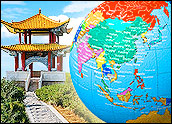
As voice, data, wired and wireless telecommunications converge, conditions are ripening for the extension of e-commerce to mobile, or m-commerce, in markets around the world.
So, what countries — and companies — are on the bleeding edge?
Juniper Research estimates that global m-commerce revenue will exceed US$88 billion by 2009, a $69 billion increase from year-end 2005, Jeff Mould, CEO of Announce Mobile, pointed out.
“The U.S. alone has an 8-to-1 ratio of mobile to PC users, according to Morgan Stanley. With e-commerce sales still soaring each year, it is only natural to see the same or greater growth in m-commerce revenues,” Mould noted.
While defining m-commerce is a bit tricky and definitions vary, one thing is certain: The market is large and growing quickly, as networks and media converge and e-commerce extends to encompass m-commerce.
“There have been a lot of estimates thrown around, but there are two or three problems with any estimate that anyone gives,” Air2Web CTO Dale Gonzalez told the E-Commerce Times.
If you count cell phone ringtone and wallpaper downloads as as m-commerce, “you’re talking about billions of dollars,” Gonzalez said.
“If you throw in revenue associated with actual buying of other goods using the cell phone, such as tickets and perishable inventory, then the estimates are all over the board. The reality is probably very little money is getting made, but that’s where the potential is,” he added.
Hotspot Locations
Opinions vary, but a consensus view has developed that Asian and emerging-market economies are hot spots for m-commerce.
“The ones that seem to come up a lot as budding hot spots are India, China and various Latin American countries like Mexico and Venezuela,” according to Gonzalez, who noted that Latin Americans “have a statistically higher-than-normal propensity to purchase goods on the phone. … They have a higher-than-normal propensity to vote, to pay money to vote and to buy ringtones and wallpapers [when compared with the United States]. So, it stands to reason that Latin America will be important to m-commerce.”
India’s combination of a large population, recent rapid technological advancement and limited Internet infrastructure makes it an emerging m-commerce market, he continued.
“Those seem to be important elements in terms of m-commerce. There are lots of people considered consumers; they have a high propensity and willingness to buy, and they have limited alternative options in terms of buying. That’s why many people see India’s potential as being very large,” noted Gonzalez.
“I don’t know what will really happen in China, but everybody seems to think that China is going to be big. Though largely, it seems [it’s] because China itself is so big,” he said. “Whenever they end up consuming anything, they consume staggering amounts of it. China has huge populations of people … moving from rural China to urban China everyday. When that happens, there’s a high purchase of cell phones. So you have enormous numbers of subscribers being added to the roles on a daily basis, although the jury’s still out on whether they do anything other than make calls on those phones.”
Japan, Korea on the Leading Edge
“Japan and Korea are very far ahead of the rest of the world with regards to innovation and consumer uptake of sophisticated data services. I believe this has as much to do with the way the carriers and handset manufacturers have approached the business as it does with geography and population density,” Tim Mitchell, vice president of marketing at IODA, the Independent Online Distribution Alliance, told the E-Commerce Times.
“I believe that Japan, per capita, probably has the biggest capacity for rapid growth in the short term. The rate of technological advancement and the very crucial fact that the carriers only take somewhere between 9 and 12 percent from transactions both have a huge effect,” Mitchell added.
David Chamberlain, In-Stat’s principal analyst for wireless technology and the author of “Mobile Wallet: More than M-Commerce,” agreed. “Japan is the strongest right now. NTT DoCoMo has been pushing mobile transactions very hard by making investments in companies that could be places to use DoCoMo’s FeliCa system,” he told the E-Commerce Times.
“The biggest problem I see is the possibility of multiple standards and technologies competing in the marketplace before the concept is completely developed. This competition could kill m-commerce altogether,” said Chamberlain. “In Japan, in contrast, all the members of the ecosystem are working toward a common technology standard, with plans to compete after it has been established.”























































Social Media
See all Social Media